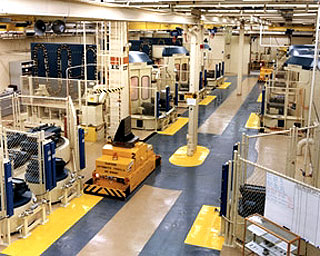
|
|
All about TPM

TPM (Total Productive Maintenance) is a maintenance philosophy that is strictly designed to integrate equipment maintenance, into the manufacturing process. The main goal of any TPM program is to eliminate losses that are tied to equipment maintenance or, keep equipment producing only good product, as fast as possible, with no unplanned downtime.
|
|
This has become more important as maintenance has traditionally been viewed as a separate entity that was completely outside of the manufacturing process. As manufacturing businesses began to identify the role of maintenance in the production process, then a gradual shift in thinking occurred. Total Productive Maintenance has emerged out of the need to integrate maintenance, with manufacturing to improve productivity, and asset availability. This culmination of change, from a reactive/corrective maintenance environment, to one that is based on preventative maintenance through predictive maintenance, is the essence of the process of TPM.
TPM is structured to drive waste out of the manufacturing process. This is done by reducing or eliminating, production time that is lost to machine failures. The main goal of any TPM program is to ensure that machinery and equipment, is always available to manufacture products, for the end customer. Thus by minimizing rework, slow running equipment and downtime, maximum value is then added at the minimum cost.
Businesses that are successful with TPM find that it is a group effort, where the entire company, works together to maintain and improve the equipment. One of the first (and most important) steps in implementing TPM is forming teams that are then empowered, to improve the process. Experts agree that flattening the organizational structure will then enable teams to address issues, when they have the greatest impact, which is when they occur. As employees join TPM teams, the operators are trained to perform routine maintenance items, and assume an ownership role. If the process is instituted correctly employees are empowered to affect the process. They will typically be in a position to identify and create, process improvements that would have normally been overlooked by management. Additionally an on-going re-factoring of the process provides a method to implement improvements.
The true value of using Total Productive Maintenance emerges as maintenance issues are addressed and TPM programs are implemented. Just as lean manufacturing relies on continuous improvement; continuous re-evaluation of the maintenance cycle allows for continuous improvement in maintenance programs. The root cause analysis that is used in TPM exposes the underlying issues to be addressed. Then by addressing issues at the root level, problems can then be eliminated.
It is important to remember that with any lean initiative it is critical to measure change. OEE (Overall Equipment Effectiveness) is the metric that was originally developed to measure the success of total productive maintenance programs. This is done by associating the Six Big Losses with three measurables: Availability, Performance and Quality. Overall Equipment Effectiveness enables organizations to benchmark and monitor, their progress with simple, easy to understand metrics. OEE functions by providing both a gauge for the success of TPM, and a framework to identify areas that can be improved.
Many manufacturing managers are left wondering how TPM can help their organization. The reality is that equipment maintenance is a fact of life. Businesses that understand this and use TPM to get the most out of their resources are able to see:
- Significantly decreased maintenance costs
- Increased equipment availability and profitability
- Improved teamwork and employee involvement
Total Productive Maintenance provides the tools to turn maintenance programs into a competitive advantage. Manufacturing businesses that apply the resources and time necessary to successfully use TPM find themselves in better long-term standing for a more profitable future.
Privacy Policy, Terms of Use